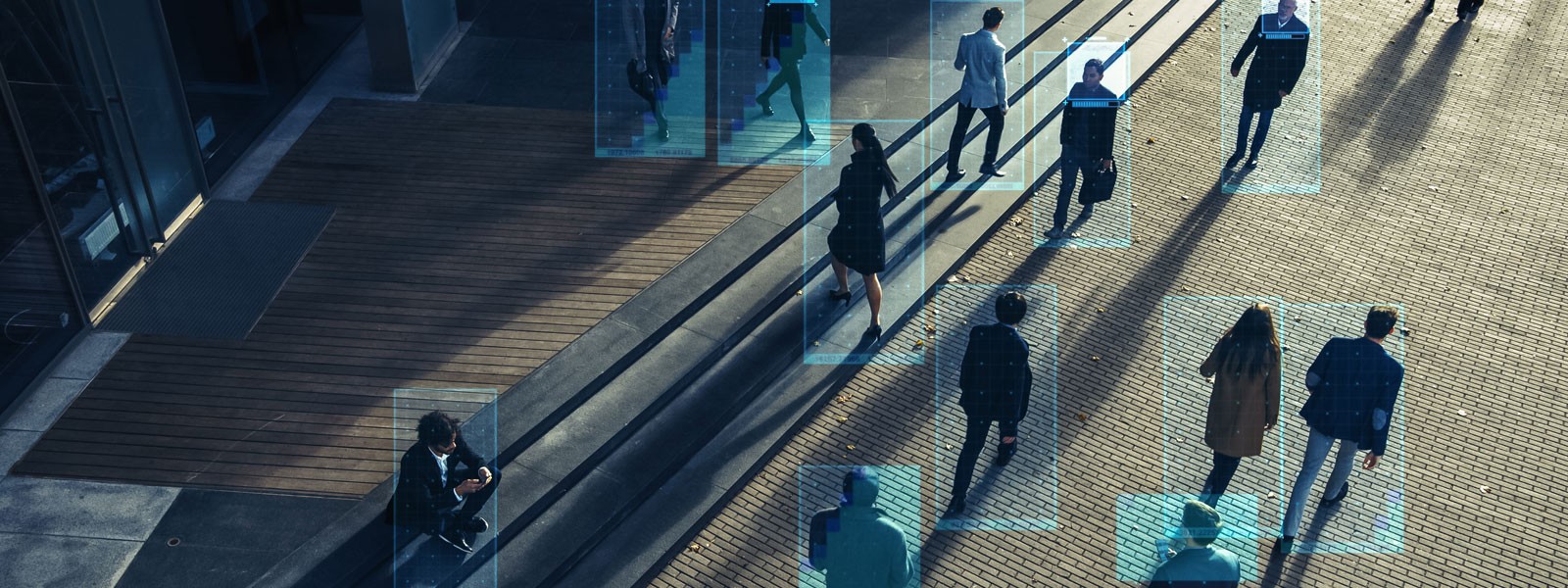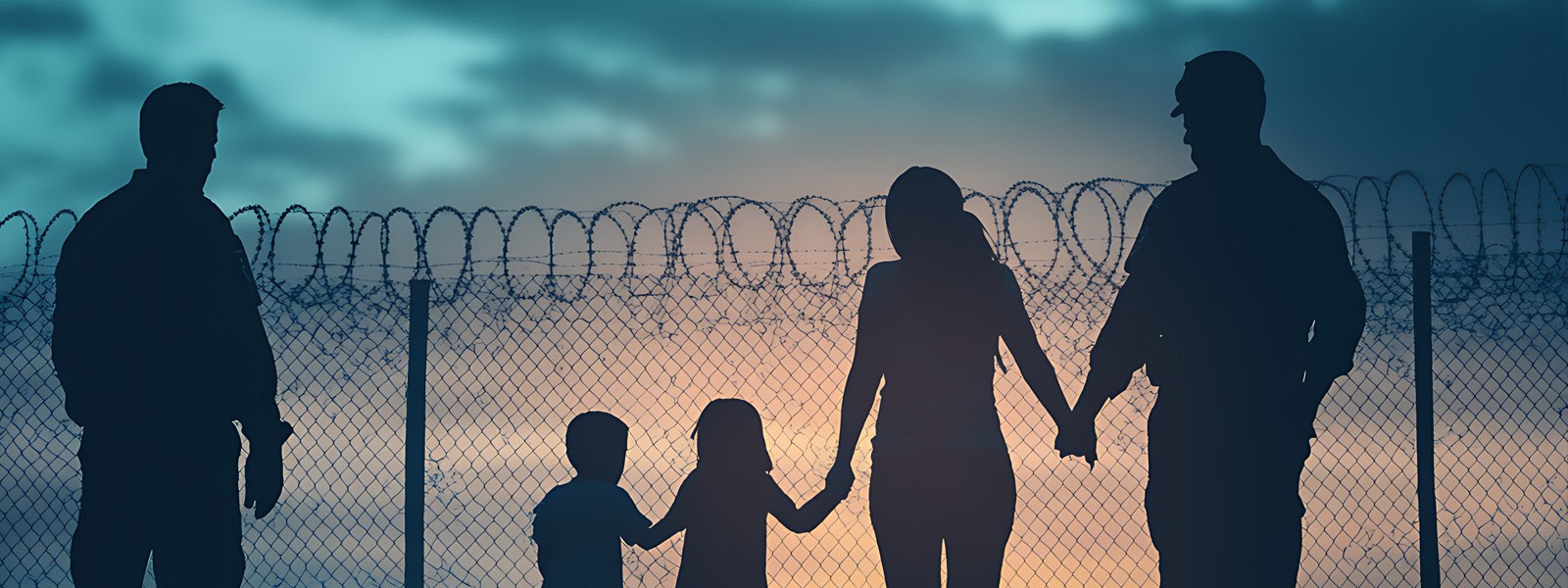SECURITY / SAFETY
2.2
Security apparatus
Let’s explore different definitions and forms of security and safety. We’ve added links to some of the subheadings for you to read up on. Look at the questions and tasks throughout this text and write down your thoughts and answers.
1. Security as a Human Right
2. Technologies
3. Privatisation
4. Securitisation
5. Insecuritisation

1. Security as a Human Right
The United Nations Universal Declaration of Human Rights includes these statements:
- “Everyone has the right to life, liberty and security of person.” (Article 3)
- “Everyone, as a member of society, has the right to social security (…).” (Article 22)
Write Down Your Thoughts
Security is a human right – the right to live free of harm and danger.
- But what measures are taken to ensure the right to security, and for whom?
- What does safety imply to differently positioned people?

2. Technologies
Security implies being able to protect oneself and one’s property. Technologies such as safes, cyber security systems, surveillance and security checks at entrances are there to ensure personal security.
Security also means putting in place an infrastructure that allows a country’s population to have social security. These infrastructures support health, unemployment, pension and other insurance systems that ensure citizens’ social security.
It focuses on lowering crime rates by containing, punishing and imprisoning those who threaten public order and safety.
Throughout the world, governments use “security” to control migration. In Europe, borders are heavily guarded, and control is pushed into parts of Africa and Asia. In the name of security, people on the move are being policed and held in camps both inside and outside Europe. In this way, Europe is pushing its borders beyond its own territory, by for instance detaining migrants who want to cross borders in West Africa.
On a global scale, notions of danger and security circulate “in images of threats and conflicts, chaos and order.” (Maguire et al, 2014:2). The resulting climate of fear and the “war on terror” has contributed to eroding the right to movement and security for people who are framed as potential terrorists.
Tasks
- Watch this video and take a look at the website of “Frontex – Europe’s Border Guard Agency”.
- Write down the technologies that are used in border control.
- Write down your thoughts on the dangers of externalising borders and outsourcing border control.
- Read the Introduction of Nicholas De Genova’s book “The Borders of “Europe”: Autonomy of Migration, Tactics of Bordering”. Download the PDF here.
References
De Genova, N. (Ed.) (2017). The Borders of “Europe”: Autonomy of Migration, Tactics of Bordering. Duke University Press.
Maguire M., Frois, C. & Zurawski, N. (Eds.). (2014). The Anthropology of Security: Perspectives from the Frontline of Policing, Counter-terrorism and Border Control. Pluto Press.

3. Privatisation
Security is not a state domain. Nation-states no longer hold the monopoly “on the provision of security for its citizens” (Diphoorn & Grassiani 2015:8). There are more and more private security companies and neighbourhood watches, including informal and vigilante groups. A “landscape of plural policing” (ibid) is emerging, and the public/private divide has become blurry.
In Switzerland, the private security industry is booming, despite falling crime rates. Companies are selling safety by installing safes and alarm systems. They also provide security personnel to individual citizens and gated communities. The number of privately hired security personnel (approximately 24‘000) outnumbers the number of publicly appointed police officers (approximately 20‘000).
Yet security guards are poorly trained and earn little. The risk of security becoming privatised is intensely discussed on Swiss Radio and Television (SRF). These discussions also highlight the lack of social security for the guards, which contrasts with the security that they embody.
References
Diphoorn, T., & Grassiani, E. (2015). “Introduction: Security.” Etnofoor, 27(2), 7-13. Stichting Etnofoor.
Diphoorn, T., & Grassiani, E. (Eds.) (2019). Security Blurs: The Politics of Plural Security Provision. Routledge.

4. Securitisation
Securitisation is a theory originally introduced by the Copenhagen School of security studies. It describes how certain issues are turned into security threats.
Critical security studies look at both state and non-state actors involved in providing security. They question the idea that danger and security are obvious or natural. These studies explore how public and private groups “engage in performances of security and often use violence as a means of usurping authority” (Diphoorn & Grassiani 2015:8).
Beyond narrow definitions of safety, they ask why and how certain discourses or events – such as low-skilled migrants crossing borders – come to be seen as threats to national or international security, which often leads to investments in weapons, wars and surveillance technology.
Write Down Your Thoughts
Read about the Copenhagen School of security studies on Wikipedia and on Critical Legal Thinking.
- In your own words, explain what the Copenhagen School means by “securitisation”. Why is this concept important in international relations? Give an example (real or hypothetical) of how something can be “securitised”.
- Do you agree that labelling an issue as a “security threat” can give governments or institutions more power? What are the risks and who benefits from this process? Use examples from the texts or current events to support your answer.
Reference
Diphoorn, T., & Grassiani, E. (2015). “Introduction: Security.” Etnofoor, 27(2), 7-13. Stichting Etnofoor.

5. Insecuritisation
Anthropologists explore how policing and surveillance shape people’s everyday lives. In this context, it’s important to think about both securitisation and insecuritisation.
For many people “around the world, it is security itself that creates insecurity” (Maguire et al. 2014:2). Securitisation often aims to regulate and restrict how people move across borders. At the same time, it allows money and capital to move freely, especially in countries focused on human security. This shows how security policies can protect some while putting others at risk.
Write Down Your Thoughts
- How has security become such a dominant paradigm in national and transnational politics, especially through policing, surveillance, and border control?
- Use examples of border policies (for example, the EU’s Frontex, the U.S.-Mexico border, or Australia’s offshore detention centers) to illustrate how security measures can simultaneously protect certain groups (like citizens or capital) while increasing insecurity for others (such as migrant, impoverished and marginalised groups of people).
- Jef Huysmans’s “The Politics of Insecurity: Fear, Migration and Asylum in the EU” provides further reading.
References
Huysmans, J. (2006). The Politics of Insecurity: Fear, Migration and Asylum in the EU. Routledge.
Maguire M., Frois, C. & Zurawski, N. (Eds.). (2014). The Anthropology of Security: Perspectives from the Frontline of Policing, Counter-terrorism and Border Control. Pluto Press.
Author: Serena O. Dankwa
